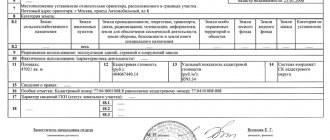25.03.2021
Get a free ticket to the exhibition “Real Estate from Leaders”
Common situation: You are the owner of a plot in SNT. Your site is well-groomed and cozy, licked and ennobled by you.
And in the neighboring area there is a war of windfall and brushwood. From such a neighborhood, weeds mixed with vipers creep into your territory, and the tall grass growing there is a fire hazard for nearby buildings.
And how beautiful your gazebo with barbecue or small garden would look on this site.
And then land is a good investment in the future. Stable and reliable.
But, alas, the neighboring plot is abandoned, and neither you nor the Chairman of the partnership know where the owner is. They say he seems to have died, but there are no heirs in sight...
According to paragraph 1 of Art. 225 of the Civil Code of the Russian Federation, ownerless is a thing that does not have an owner or the owner of which is unknown or, unless otherwise provided by law, the owner of which has renounced the right of ownership.
It turns out that the current legislation provides for methods of legal re-registration of uncultivated land plots to new owners, including on the territory of SNT.
How to legally take over an abandoned plot in SNT. Step-by-step instruction
Depending on the specific situation, several scenarios are possible:
- if the land plot does not have an owner, then it may be classified as undemarcated land managed by a municipal entity at the district level.
- According to clause 3 of p. 225 of the Civil Code of the Russian Federation, ownerless immovable things are accepted for registration by Rosreestr, upon the application of the local government body in whose territory they are located.
- If the owner exists, but is not interested in bearing the burden of maintaining the site, then he can voluntarily renounce property rights to it by submitting a corresponding application to Rosreestr (clause 2 of Article 53 of the Land Code of the Russian Federation)
- there is always the opportunity to conclude a civil contract with the owner, for example, draw up a bill of sale, if you manage to find him and interest him in the transaction
- a procedure is applied for the seizure of a land plot not used by the owner for its intended purpose. Finally, in the event of the death of the copyright holder and the absence of heirs, the land plot acquires the status of escheat property and passes to the state (Part 1 of Article 1151 of the Civil Code of the Russian Federation).
The procedure and duration of registration of rights to an abandoned land plot in SNT depends on many factors, including whether an inheritance case was opened with a notary after the death of the owner of the plot, whether any buildings are located on the land plot, etc.
Based on the principle of the unity of fate of the land plot and the real estate located on it, it is possible to purchase an abandoned plot only at the same time as the house and other buildings located on it.
So, let's get started! First we need to identify the owner of the land if we do not have this information.
The algorithm of actions may be as follows:
1. Find a land plot on a public cadastral map and find out its cadastral number.
Each plot of land registered in Russia has a unique number in the cadastre. This is a code that serves as a means of identifying a property.
If the cadastral number of a plot of land is unknown, you can find it out at the address.
The public cadastral map (PCC) is a reference and information resource for providing users with information from the state real estate cadastre on the territory of the Russian Federation https://kadastr.ru/services/publichnaya-kadastrovaya-karta/.
With its help, you can obtain information from Rosreestr about the general characteristics of the site, check the name of the owner, and the presence of restrictions.
In what cases may a land plot not be displayed on the RCC?
- The land plot was not registered with the state cadastral register in the manner prescribed by law;
- The land plot does not have clearly defined boundaries, i.e. the copyright holder has not carried out land surveying. Previously, during real estate transactions and registration, the law did not require citizens to carry out land surveying. But there may be a situation where land surveying was carried out by the copyright holder (or the previous owner of the land plot), but information about the boundaries of the plot is still not available on the PKK. The following situations may occur here: land surveying was carried out, but the copyright holder did not submit the necessary documents to the authorized body at that time
2. Then we order an extract from the Unified State Register for the area of interest
In order to document the absence of information in the USRN database about the registered rights of a new owner (or to ensure that the plot is registered in the name of a deceased gardener), you need to order an extract from the Unified State Register of Real Estate (USRN) using the cadastral number of the land plot, for example, through the Rosreestr website (https://rosreestr.gov.ru/) or using the State Services service, or through the MFC. Anyone can receive such an extract from the Unified State Register of Real Estate with information on any real estate, both for their own and for someone else’s real estate.
3. To whom can local governments transfer ownerless land in the SNT?
According to the norms of the Land Code of the Russian Federation, without holding a tender, the sale and lease of land plots in state or municipal ownership, formed from a land plot provided by SNT, with the exception of general purpose land plots, is carried out to members of such a partnership (clause 3 p. .2 Article 39.3 and clause 7 clause 2 Article 39.6 of the Land Code of the Russian Federation).
Therefore, there are options:
A. A land plot can be transferred into shared ownership of all owners of plots located within the boundaries of the SNT territory
If the land plot of interest, located within the boundaries of the SNT territory, belongs to the public property of the SNT, then, in accordance with the decision of the general meeting of members of the gardening partnership, such a plot is subject to free transfer into common shared ownership to the persons who are the owners of land plots located within the boundaries of the SNT territory, in proportion to the area of these plots, provided that all owners have expressed consent to purchase the corresponding share (Clause 3 of Article 25 of Federal Law No. 217 of July 29, 2017 “On gardening and vegetable farming by citizens...”).
In practice, it will be extremely difficult, almost impossible, to carry out actions and obtain the consent of 100% of all land owners to hold a legitimate general meeting. What to do if the plot belongs to the public lands of SNT, and the general meeting does not want to register it as the common shared property of all members. SNT?
There are legal ways out of such situations. Options can only be proposed after familiarization with the specific situation of the person concerned.
B. The land plot can be transferred to the owner of the land plot located within the boundaries of the SNT land territory.
If it turns out that a specific land plot was issued or registered in the name of a deceased gardener, and the data from the public cadastral map https://kadastr.ru/services/publichnaya-kadastrovaya-karta/ confirms that this plot, located within the boundaries of the SNT territory, does not belong to the common use lands of all members of the SNT, that is, the opportunity for an interested member of this partnership to enter into an agreement for the sale or lease of an abandoned land plot with a local government body.
Get a free ticket to the exhibition “Real Estate from Leaders”
How to legally take over an abandoned plot in SNT. Step-by-step instruction
How do local governments process abandoned sites?
First, local authorities must register the ownerless plot. To do this, the interested party submits an application with a request to recognize the abandoned site as ownerless.
The local government body carries out the procedure for registering the site.
Registration of ownerless plots is carried out by the local branch of Rosreestr at the request of local authorities
According to clause 3 of p. 225 of the Civil Code of the Russian Federation, after 1 year from the date of registration of an ownerless immovable property, the body authorized to manage municipal property may apply to the court with a demand for recognition of the right of municipal ownership of this thing.
If, by a court decision, an ownerless land plot and the buildings on it become municipal property, then the local government body will then decide on the possibility of providing the applicant with these real estate objects by concluding a purchase and sale or lease agreement with him.
What should the chairman do with the “abandoned”
For SNT chairmen, abandoned sites also pose a problem. Their owners do not pay fees and do not participate in the affairs of the partnership. Abandoned and unkempt areas can pose a hazard to neighbors due to accumulated trash and dry grass. In the end, it all becomes the chairman's problem.
The main measure to combat abandoned sites will be to identify their owners and collect arrears from them in contributions. Considering the 3-year statute of limitations, it is advisable not to delay this process for a long time.
Having identified the owner, the chairman can agree with him on the representation of interests in the sale of the land plot. This can be done by issuing a power of attorney to carry out transactions with the land of interest under certain conditions or at the discretion of the person receiving the power of attorney.
A power of attorney for the execution and registration of transactions with real estate, including land, requires notarization in accordance with Art. 185.1 of the Civil Code of the Russian Federation.
Alexander Vasiliev
Lawyer
You can determine who is the owner of the site in the same manner as described above. You should start with a request to the Unified State Register of Real Estate. If there is no data in it, it is necessary to raise the available documents regarding the allocation of the land plot and its last known owners. The procedure for identifying owners of previously registered real estate, introduced in the summer of 2021, may also contribute to their search. In some cases, you can try to return the site to the local education administration that allocated it for use - however, this option will rather be an exception to the general procedure.
Who can I contact to resolve the issue of an abandoned site in SNT?
If you have questions about an abandoned plot in SNT, you can seek advice and further recommendations from municipal land control inspectors in the territory of the municipality where the land plot of interest is located.
The powers of inspectors include monitoring the use of land, registering rights to municipal land plots and organizing the conclusion of contracts with applicants.
Get a free ticket to the exhibition “Real Estate from Leaders”
How to legally take over an abandoned plot in SNT. Step-by-step instruction
Registration of ownerless land due to acquisitive prescription
One of the ways to acquire ownership of unowned real estate is to obtain it through acquisitive prescription.
Acquisitive prescription is the fact by which a person who is not the owner of a property, but responsibly, in good faith and constantly owns someone else’s real estate as his own for fifteen years, acquires the right to own the property.
The right to own real estate, which is subject to state registration, comes into effect in relation to the person who acquired this property under the terms of acquisitive prescription from the time of registration.
It should be noted that the calculation of the period of acquisitive limitation regarding property that is in the possession of the person from whose possession they could potentially be claimed (according to Articles 301 and 305 of the Civil Code) starts no earlier than the end of the limitation period for the relevant claims.
Thus, you have the right to apply to the court in order to acquire possession of an ownerless plot of land due to acquisitive prescription, no earlier than after eighteen years of conscientious exploitation.
Is it possible to register ownership of an abandoned plot without going to court?
Depending on the specific situation, municipal ownership of an empty land plot can be registered without going to court.
Situations are common when, after the death of the owner of a neighboring plot many years ago, the board of SNT and the neighbors have no information about his heirs.
In such cases, the Register of Probate Cases, located on the website of the Federal Notary Chamber https://notariat.ru/ru-ru/help/probate-cases/, can help, where you can find out whether the inheritance case was opened by the heirs of the deceased gardener, and also from which namely a notary.
It is possible that the land plot you are interested in is escheated, since the inheritance case was not opened after the death of the gardener-testator, and all inherited property became the property of the Russian Federation (Part 1 of Article 1151 of the Civil Code of the Russian Federation).
In this case, the land plot, as well as the buildings and structures located on it (as escheated property) pass by inheritance by law into the ownership of the urban or rural settlement, municipal district (in terms of inter-settlement territories) or urban district where the land plot is located ( Clause 2 of Article 1151 of the Civil Code of the Russian Federation)
“Escheated property, in the case of inheritance of which refusal of inheritance is not allowed, from the day the inheritance is opened, passes by inheritance according to the law into the ownership of the Russian Federation, as well as regardless of the formalization of inheritance rights and their state registration. A certificate of the right to inheritance in relation to escheated property is issued by the Russian Federation in the same manner as to other heirs, without issuing a special court decision recognizing the property as escheat.” (Paragraph 50 of the Resolution of the Plenum of the Supreme Court No. 9 of May 29, 2012 “On judicial practice in inheritance cases”).
Get a free ticket to the exhibition “Real Estate from Leaders”
How to legally take over an abandoned plot in SNT. Step-by-step instruction
Rights and obligations of the landowner
Any legally established rights also imply responsibilities. In the case of land, this is regulated by Articles 209 and 210 of the Civil Code of the Russian Federation. According to existing legislation, the owner of the land is obliged not only to maintain the property in a safe condition for others, but also to use it for its intended purpose, prevent desolation, register the property, pay taxes on it and pay for services, for example, housing and communal services. As you can see, it is in the interests of the state to find the owner of the land and get him to either fulfill his duties or renounce his ownership of the land.
At the same time, the law is clear - if a site for agriculture, individual housing or other construction is not used for its intended purpose for more than three years, it can be seized from the owner. Yes, this is a fresh norm established in 2021 (Article 284 of the Civil Code of the Russian Federation), and so far few people have resorted to it, but it exists.
In order to recognize a site as unused, it is necessary that no economic activity has been carried out on it for at least five years (two years to develop the site and three years in case of financial or other difficulties).
How do local governments register an escheated land plot?
In this case, municipal property is registered without a judicial act.
Local authorities:
- receive from a notary a certificate of the right to inheritance according to the law for the land plot and the buildings located on it
- register municipal ownership of these real estate properties in Rosreestr. And after the state registration of municipal ownership of land in Rosreestr...
- makes a decision on concluding a purchase and sale or lease agreement with the applicant, makes a decision formalized in the form of an act,
- then offers the applicant a draft of this agreement for review and signing. After concluding an agreement with the applicant...
- within the framework of interdepartmental interaction, the local government body is obliged to independently apply to Rosreestr no later than 5 (five) working days from the date of adoption of the act or completion of such a transaction, providing the necessary documents there.
- The result of registration of the applicant’s right will be a special registration inscription on the contract and the issuance of an extract from the Unified State Register to the applicant.
If no heirs are found
You will have to obtain documents to obtain ownership of a summer cottage according to the current law
It happens that the legal owners of the land who decided to abandon the site have not been found. This is quite possible not only because the former owner had no relatives in Russia, and others may be in other states, but also because land plots under the USSR were issued to the subject for the right to use, but no legal documents for real estate and land, Naturally, no one did it at that time. And today it is very troublesome to transfer such a plot into private ownership, although it is possible.
Important: formally, land given to individuals before the collapse of the Union is not the property of the individual. Therefore, a person cannot make any transactions on this site. You first have to obtain documents to obtain ownership of a summer cottage according to the current law. Is it possible to draw up documents in this case? We will discuss it below.
Registration of ownerless land as property through the court
In a situation where the acquisition of a plot of land is based on acquisitive prescription, the mechanism for transferring ownership rights itself is carried out through the courts. During the court hearing, the actual owner is required to present evidence of the fact that for fifteen years he has continuously, openly and conscientiously owned and exploited this plot of land.
The latest characteristics mean:
- Bona fide possession means that the owner, at the time of receipt of the object, assumed, perhaps in error, regarding the actual circumstances for the reasons for which he became its owner, and also that this gave him certain rights. That is, the owner did not and could not know about the illegality of his own possession;
- Open possession means that the person did not perform any special actions to conceal the fact of possession of the object;
- Continuous ownership means that the possession and operation of the plot must occur without interruption for the full period established by law for acquisitive prescription. Possession, which is carried out sporadically, demonstrates the lack of desire to possess the land and in this case terminates the period of acquisitive limitation. In addition, a person is obliged to carry out actions in relation to a piece of land that are characteristic of a caring owner. That is, to own an object as your own, treat it in the same way as your other property (make tax payments, comply with the rules on compulsory insurance, make repairs, and so on).
To demonstrate his own bona fide, open and continuous possession, a person has the right to submit various documents to the court. The verdict of the court constitutes the basis for registration of ownership rights.
Despite the fact that registration of ownership of an ownerless object, which is registered on the basis of acquisitive prescription, can be carried out regardless of the time of registration of this object.
Experts from the Federal Cadastral Chamber, together with RBC-Real Estate and lawyers, figured out the intricacies of this topic
Dilapidated, ownerless houses are a fairly common occurrence in cities and even more so in dacha communities or villages. Owners of neighboring houses may want to register such buildings for themselves. Moreover, this desire is absolutely legal.
How to register an ownerless house in your name? RBC-Real Estate, together with experts from the Federal Cadastral Chamber and lawyers, understood the intricacies of this topic.
What is an ownerless house and where to look for it
The nature of the occurrence of abandoned houses is different. For example, such real estate may arise if the owner died and the heirs abandoned the property, did not take ownership at the required time, or the owner had no heirs. A house can become abandoned because the previous owner moved away and left his property.
In Russia, as in many European countries, the largest proportion of abandoned houses are located in rural areas, sparsely populated urban districts or municipal areas. People migrate to big cities in search of better living conditions and leave their homes (sometimes difficult to sell in rural areas).
According to the Civil Code, a thing that does not have an owner, is unknown, or has been abandoned by the owner is considered ownerless (Clause 1, Article 225 of the Civil Code of the Russian Federation). A house whose owner is unknown or who has renounced ownership is called “ownerless” or “lost.” There is also the concept of “abandonment”. This is the name given to a house or plot whose owner is known or, as a result of a search, it was possible to identify him, but he does not take care of his property (explanations of the Cadastral Chamber).
There is no single list of ownerless residential buildings and land plots. However, a large amount of information can be found when ordering an extract from the Unified State Register of Real Estate (USRN), if the “lost property” is registered. The extract will help reveal information about the house, its owner and possible encumbrances.
There are several ways to become the owner of an abandoned house. For example, find the owner and buy the property, purchase an “abandoned” property at auction from the municipality, or own an openly abandoned house for 15 years and subsequently become its legal owner. Let's talk about these options. Registration of an ownerless house. Instructions from the Cadastral Chamber
Step 1. Finding the owner and collecting information about the desired home
First of all, it is necessary to identify the owner of the house. If the site with the house is located on the territory of a garden partnership (SNT), you should first contact its chairman. Perhaps through it you will be able to find out the address and cadastral numbers of the house and plot. You can add high technology to your search. For example, try to find the cadastral numbers of a land plot and a house on a public cadastral map or by requesting information contained in the Unified State Register of Real Estate.
If it is unknown whether a homeless house is located in the SNT, you should contact the authorities authorized to issue a construction permit at the location of such a house. There, they may be able to help you find out who was issued permission to build the house you are interested in and, accordingly, provide information about the alleged owner of the house.
Option 1
When the owner of the building has been found, he will be able to transfer his property to you only through a civil transaction, most likely, under a purchase and sale agreement. But before this, you need to register the house in the cadastral register if information about it is not available in the Unified State Register of Real Estate.
The Land Code establishes that the fate of a land plot and objects firmly connected to it are the same. This means that it is more expedient to register ownership of this property, as well as its purchase, simultaneously with the purchase and registration of rights to the plot on which such a house is located.
Option 2
If the owner remains unknown, but you find out that the land plot under the house is located in SNT and is not registered in the Unified State Register of Real Estate, you need to contact the municipality again and proceed to the next stage.
Step 2. Submitting an application for ownership or lease of an abandoned site
To register it as property, you must submit an application to the authorized local government body to register the “owner” (we are talking about a capital construction project).
Within 15 working days from the date of receipt of the application and documents, the house will be entered into Rosreestr and a notification will be sent to you. If the site still has an owner, but the property was registered due to his abandonment of ownership, then he will also receive a notification.
Step 3. Appeal of local authorities to court
From the day the ownerless house is registered by the registration authority, you must wait a year - during this time its owner may appear. If this does not happen, then the authorized local government body can go to court and recognize ownership rights.
If the property is located in cities of federal significance: Moscow, St. Petersburg or Sevastopol, the executive authorities of these regions must apply to the court to register the ownerless property and then go to court. In all other cases - bodies authorized for state registration of rights to real estate, upon application of the local government body on whose territory the real estate being registered is located.
Step 4. Conducting an auction for an abandoned plot
After the abandoned plots become the property of the authorities, they are put up for auction. To purchase them, you need to win this auction.
“There are a number of cases provided for in Part 2 of Art. 39.3 of the Land Code, when you can buy a plot with a house, including an ownerless one, without bidding. This right is, for example, available to members of the SNT, on whose territory the house is located, if the land under it is not intended for general use,” noted the Cadastral Chamber.
The winner of the auction is the one who offers the highest price. If only one interested party takes part in the auction, then the agreement is concluded with a single participant. Or such a plot can be leased by the municipality to a person interested in it, added lawyer Elizaveta Marilova.
Step 5. Taking ownership
The result of registration of the right will be a special registration inscription on the agreement and the issuance of an extract from the Unified State Register. On average, the procedure for registering ownerless real estate takes a little more than a year. Acquisitive prescription, or 15 years of open ownership
Another way to become the legal owner of an ownerless house is indicated in Art. 234 of the Civil Code and is associated with such a concept as “acquisitive prescription”. According to this article, a citizen can occupy an ownerless house and live in it openly. If no legitimate claimants to ownership have been announced for 15 years, then the new owner has the opportunity to become the formal (legal) owner of the property, explained Elizaveta Marilova.
But for this to happen, three fundamental circumstances must be met. First, there is bona fide possession. For example, maintaining the land, carrying out planting work, paying for utilities. Secondly, open ownership. That is, the new owner does not hide the fact that the abandoned property is in his possession. Third, continuity of ownership. This means that the person owned and used the ownerless house throughout the entire period of acquisitive prescription, that is, 15 years.
“Simply put, if a citizen lived in an ownerless house and in fact this house was his only home for 15 years. Owning an abandoned house begins with the first fact confirming it. For example, from paying for housing and communal services or carrying out repair and construction work,” the lawyer said.
“At the same time, ownership of property as one’s own means ownership not by contract. It is for this reason that Art. 234 of the Civil Code does not apply if ownership of property is carried out on the basis of an agreement,” added Asiya Mukhamedshina, a member of the Russian Lawyers Association (RLA).
You can become the legal owner of an ownerless house on the basis of acquisitive prescription by a court decision. To do this, a total of at least 18 years must pass. “It is necessary to add a three-year limitation period to the 15-year period, namely, you can go to court only 18 years after the start of ownership of the property,” said the representative of the Law Firm.
After a court decision recognizing the ownership of an ownerless house, the new owner can register the ownership in Rosreestr and dispose of it as the full owner.
Price issue
Expenses when registering ownerless real estate involve, firstly, payment of the state fee for registering ownership, and secondly, payment for:
— extract from the Unified State Register of Real Estate; — purchase or rental of an abandoned plot along with a house, if it is located there; — demolition of an abandoned house if the new owner does not need it; - construction of new facilities on this site, if the owner has such a desire.
There are also “ownerless” properties that need to be completed or invested in repairs. There may be additional costs for notary services when concluding an agreement and other costs.
Underwater rocks
A situation may arise when a person registered an “ownerless” property and registered the right to it, but the previous owner suddenly showed up. However, he claims that he did not receive notifications about transactions with his real estate from local authorities or did not know that his house was listed as ownerless. The former owner wants to challenge the new owner's right and evict him. This issue will have to be resolved in court.
The same applies to living in an abandoned house for 15 years. It must be taken into account that the owner of the house may appear at any moment and demand that you leave it. In this case, you will have to move out, because the resident has not yet acquired any rights to the house.
“If your physical 'investments' can be separated from your home and taken with you, then you can do it. It is possible to recover from such an owner the capital investments you made in the house (for example, in a situation where you prove that otherwise the house would have collapsed), but it is quite difficult. At the same time, you will have to confirm that you have done everything necessary to find the potential owner of the house,” the lawyer warned.
In general, when starting to buy out or register an abandoned property, you need to take into account that this procedure is quite lengthy and requires considerable investment.
Especially if the site and the house need serious care, repairs or even demolition. Such options are usually suitable for people who have an abandoned house in their neighborhood. In this case, the owner can expand his plot. But the main thing is to make sure that no one really needs the property. To avoid an unpleasant situation in the future. Photo: olegmorgun1311/shutterstock







